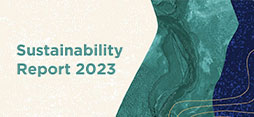17 January 2016
WCA on the IEA Medium-Term Coal Market Report 2015
Source: World Coal Association
Below are comments from Benjamin Sporton, Chief Executive, World Coal Association, on the launch of the IEA Medium-Term Coal Market Report 2015.
- While the report from the IEA points to a flattening of coal demand in China, the latest IEA World Energy Outlook highlighted that China will remain the world’s largest producer and consumer of coal. In fact, Asia is projected to account for four out of every five tonnes of coal consumed globally and coal will remain the backbone of the power system in many countries, including China.
- Coal powers 30% of global electricity in 2040 and will continue to play an essential role in building modern infrastructure, through its use in steel, cement and aluminium production.
- Only about 50 per cent of China’s coal consumption is used in domestic power generation (compared with 92 per cent in the USA, for example). About 25 per cent of China’s coal is used in small boilers for buildings and households for heating. This is low quality coal and a big contributor to the pollution in major cities. The use of this low quality coal will reduce sharply as anti-pollution efforts increase and the electricity grid is further modernised and expanded.
- There is 420 GW of new high efficiency low emissions (HELE) coal-fired power generation planned or under construction in China. China’s Electric Power Planning Institute expects coal-fired electricity capacity to grow from 780 GW in 2014 to 1100 GW by 2030 (low case) or 1300 GW in the high case.
- While China’s coal use overall may flatten out, demand for high quality coal for HELE plants is likely to grow. That’s why China’s INDC states the goal is “to enhance the use of clean coal, increase the share of concentrated and highly-efficient electricity generation from coal…”
- The foundation of the Paris Agreement are the Intended Nationally Determined Contributions (INDCs). Countries must be supported in the implementation of their INDCs, which for many, such as China, include a role for low emission coal technologies, including high efficiency low emissions coal and carbon capture and storage.
- High efficiency low emission coal technologies available today can make huge improvements in the environmental performance of coal-fired power stations. Increasing the average efficiency of the global coal fleet from 33% to 40% would save us two gigatonnes of CO2, which is equivalent to India’s annual CO2 emissions.
- Modern coal plants also significantly reduce or eliminate pollutant emissions, such as oxides of sulphur and nitrogen, and particulates compared to older, less efficient subcritical technology.
Categories:
Industry news Whitehaven coal
Whitehaven coal

